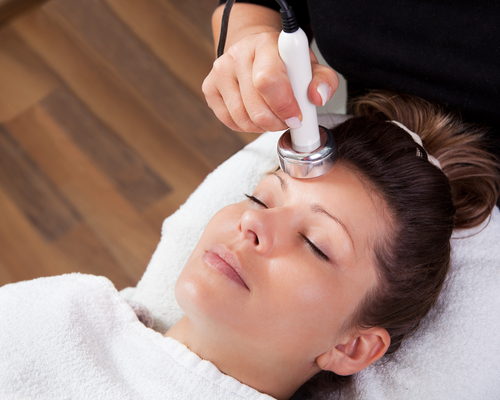The Evolution of Laser Treatments: A Focus on Pico Laser

Laser technology has transformed the landscape of dermatology and aesthetic treatments, offering non-invasive options for various skin concerns. Among the many advancements, Pico Laser Dubai technology has emerged as a groundbreaking solution. This article delves into the evolution of laser treatments, highlighting the unique features and benefits of pico lasers.
The Beginnings of Laser Technology:
Laser technology began to gain traction in the 1960s, primarily in the medical field. The first lasers were used for precise surgical procedures, utilizing focused light to cut tissue with minimal damage. Over the decades, as research expanded, lasers found applications in dermatology for skin rejuvenation, tattoo removal, and the treatment of pigmentation disorders.
Early Laser Treatments:
Initially, laser treatments focused on ablative procedures, which involved the removal of the outer layers of skin. Carbon dioxide (CO2) and erbium lasers were among the first to be employed, offering effective results but often at the cost of prolonged recovery times and significant discomfort. These early treatments provided dramatic improvements but lacked the finesse and precision that modern technologies would offer.
The Shift to Non-Ablative Lasers:
As the demand for less invasive treatments grew, the dermatology community began to explore non-ablative lasers. These lasers, such as Nd
and pulsed dye lasers, worked by targeting deeper layers of skin without damaging the surface. This approach significantly reduced recovery time and discomfort, making treatments more appealing to a broader audience. Patients began to seek options that offered effective results with minimal downtime, leading to the exploration of new technologies.
The Introduction of Pico Lasers:
Pico lasers represent a significant leap forward in laser technology. Introduced in the early 2010s, pico lasers utilize ultra-short pulses of energy, measured in picoseconds (one trillionth of a second), to target pigment and skin issues. This innovative approach allows for the fragmentation of pigmentation and tattoo ink particles into much smaller pieces, which are then more easily eliminated by the body’s immune system.
How Pico Lasers Work:
Pico lasers operate on a unique principle of delivering energy in incredibly short bursts. The rapid pulse duration generates a photoacoustic effect rather than a traditional photothermal effect. This means that instead of generating heat that can cause skin damage, the energy causes the targeted particles to shatter. The resulting micro-injuries stimulate collagen production and promote skin rejuvenation, making pico lasers effective for a range of treatments.
Benefits of Pico Laser Technology:
-
Precision: Pico lasers can precisely target specific areas, minimizing damage to surrounding tissues. This feature is especially beneficial for delicate areas and in treating conditions like melasma and hyperpigmentation.
-
Reduced Downtime: Due to the non-thermal nature of pico lasers, patients experience less redness, swelling, and downtime compared to traditional laser treatments. Many patients can return to their daily activities immediately after treatment.
-
Versatility: Pico lasers are effective for various concerns, including tattoo removal, acne scars, skin rejuvenation, and pigmentation issues. Their ability to treat multiple conditions makes them a valuable addition to any aesthetic practice.
-
Improved Results: Clinical studies have shown that pico lasers can achieve results in fewer sessions compared to traditional lasers. Patients often notice significant improvements in skin texture, tone, and clarity after just a few treatments.
The Clinical Applications of Pico Lasers:
Pico lasers have been embraced in various clinical applications, making them a versatile tool for dermatologists and aesthetic practitioners.
Tattoo Removal:
One of the most popular uses of pico lasers is for tattoo removal. The technology’s ability to break down ink particles more effectively allows for faster fading of tattoos with fewer sessions. This advancement has significantly improved patient satisfaction, as the process is quicker and less painful.
Skin Rejuvenation:
Pico lasers are also gaining traction in the field of skin rejuvenation. They can effectively treat fine lines, wrinkles, and textural irregularities by stimulating collagen and elastin production. The results are often comparable to more invasive procedures but with reduced recovery time and discomfort.
Pigmentation Disorders:
Conditions like melasma, sunspots, and post-inflammatory hyperpigmentation can be challenging to treat. Pico lasers offer a safe and effective solution, targeting the underlying pigmentation while minimizing damage to the surrounding skin. Patients often experience a more even skin tone and improved texture.
The Future of Laser Treatments:
As technology continues to evolve, the future of laser treatments looks promising. Researchers are exploring combinations of pico lasers with other modalities, such as radiofrequency and microneedling, to enhance results further. The potential for personalized treatment plans tailored to individual skin types and concerns is becoming increasingly feasible.
Advancements in Technology:
Future advancements in pico laser technology may include improved delivery systems, enhanced precision, and even faster treatment times. As more practitioners adopt pico lasers into their practices, ongoing research will likely yield new techniques and applications, broadening the scope of what is possible with laser treatments.
Conclusion:
The evolution of laser treatments has come a long way from its inception in the 1960s. The introduction of pico lasers marks a significant milestone in this journey, offering a powerful, precise, and versatile solution for various skin concerns. As technology continues to advance, pico lasers are set to play a crucial role in the future of dermatological and aesthetic treatments, providing patients with effective options that enhance their natural beauty with minimal downtime. Whether for tattoo removal, skin rejuvenation, or treating pigmentation disorders, pico lasers represent the next frontier in laser technology, paving the way for safer and more effective treatments.

